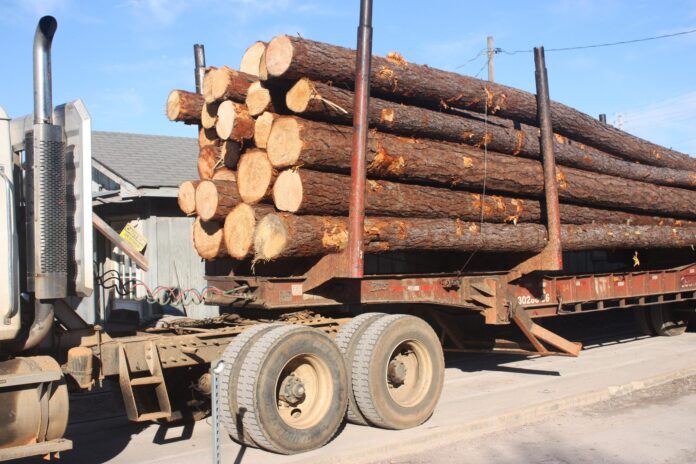AUBURN UNIVERSITY, Ala. – The Alabama timber industry is successfully healing after the COVID-19 pandemic’s temporary crippling of the market two years ago. The virus’s impact on mill capacity rates and lumber prices started in early 2020, and it is still likely to cause problems in the supply chain from time to time in 2022. Alabama forest landowners are preparing for a new year. What can they expect?
“The forestry industry in Alabama is strong,” said Alabama Cooperative Extension System Forestry Specialist Adam Maggard. “I don’t anticipate any extreme changes in timber values for the coming year. However, you will likely see typical seasonal variations in prices. Demand is still increasing for timber products across the board.”
What is the timber market?
The timber market is a living, breathing system that fluctuates and moves based on a combination of participating entities. These groups include timber buyers and sellers, producers and manufacturers and intermediaries and consumers.
The dynamic movement of trees from harvest sites to the mills and manufactures that need them is one of the main drivers affecting how much a consumer will pay for a timber product. The value of timber on its stump (i.e., still growing in soil) is stumpage price. This is the amount of money that forest landowners receive after selling their trees for harvest in local markets. Trees are then contracted by a timber buyer, harvested and taken to a mill or manufacturer for wood product production.
What factors affect stumpage values?
Maggard claims there are many factors that dictate the stumpage price for landowners. To better understand the fluctuation of timber pricing, people can think of it in terms of two separate scales: large and small.
Large scale contains factors at the state, regional, national or even global level.
- Economy
- Housing market
- Demand for products (e.g., local, national and global)
- Supply of timber
- Seasonality
Local scale contains factors at a local, more focused level.
- Competition – mill-to-mill competition or the number of mills competing for certain area of timber supply
- Distance to the mill (i.e., from tree harvest sites)
- Demand for timber by the mills
- Seasonality – wet versus dry weather, dry timber tracts versus wet timber tracts
- Tract size – timber acreage and volume
- Tree species, size and quality
2022 Timber Market Trends
Thanks to significant capital investments during the last six to eight years, the state’s forest market is thriving. As a result, these advancements allow for the establishment of new mills, improvements in overall mill capacities and even transitioning from production of one type of forest product to another based on demand.
“I believe landowners in Alabama should keep an eye out on some key points in 2022,” Maggard said. “These factors include the economy, housing market, timber mills and developments with importing and exporting of timber products.”
Forest Landowner Tips
If someone is not a timber market veteran, there are some tips for clarification. Maggard says the first piece of information a forest landowner should know is the details about their woods. In this case, the term “woods” does not translate to an entire ecosystem. Specifically, it refers to the tree species and wood types (e.g., hard and soft woods) on a property. A landowner should also consider how accessible the timber tract is for harvest as this could affect supply rates and stumpage pricing.
“Know what you have, what your property is best suited for producing and what the local markets are in your area,” Maggard said. “Also, decide the difficulty level of harvesting a timber stand when the time comes. I think it is also important for landowners to know their neighbors. Talk to other timber owners and ask questions to get a better idea of what is happening in your area in relation to timber harvesting and markets.”



















